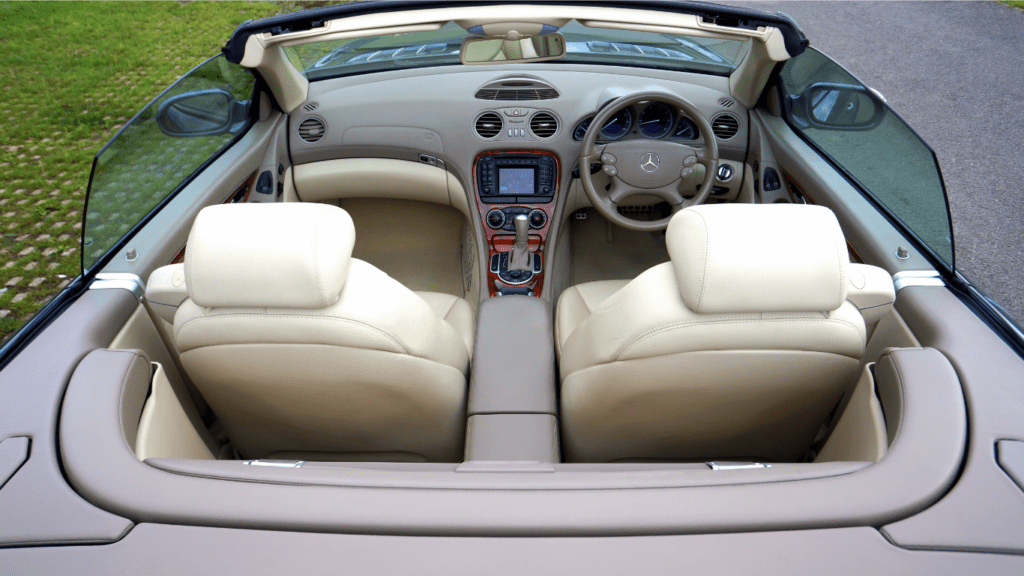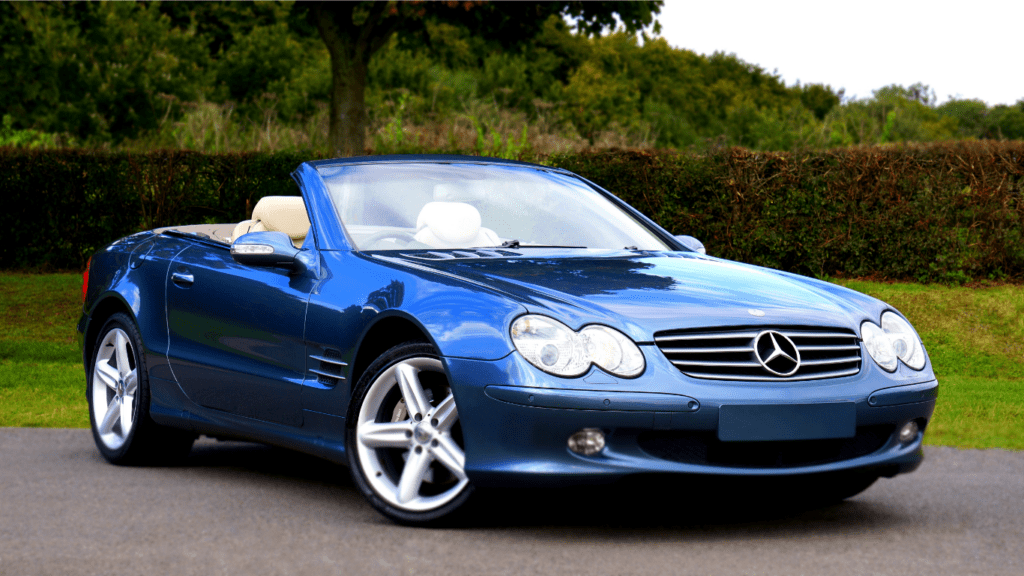Understanding Leasing and Financing
Leasing and financing present unique opportunities for acquiring a luxury car. Knowing how each works is crucial to making an informed decision.
What Is Leasing?
Leasing involves renting a luxury car for a specified period. Instead of buying, you pay monthly installments to use the vehicle. The lease term usually spans 24 to 36 months. At the end of the lease, you return the car or opt for a new lease. Leasing typically includes mileage limits and maintenance requirements. In a lease, there’s no ownership—you’re essentially paying for the car’s depreciation during the lease period.
What Is Financing?
Financing means purchasing the car through a loan. You secure a car loan from a bank or financial institution, then make monthly payments to pay off the principal and interest. Once the loan term, often 36 to 72 months, is complete, you own the car outright. Financing involves higher monthly payments compared to leasing but builds equity with each payment. Financing also permits unlimited mileage and no restrictions on modifications.
- Ownership: Leasing offers no ownership; financing grants full ownership post-loan.
- Monthly Payments: Lease payments are lower than finance payments due to covering only depreciation.
- Mileage Limits: Leases impose mileage caps, generally between 10,000 to 15,000 miles per year. Financing has no such limits.
- Maintenance and Wear: Leasing contracts often require stringent maintenance and penalize excessive wear. Financing doesn’t, giving you more freedom.
- Flexibility: Financing allows selling or trading the car anytime. Leasing binds you to the lease term unless you pay termination fees.
Pros and Cons of Leasing a Luxury Car
Choosing between leasing and financing a luxury car involves evaluating multiple factors. Let’s delve into the specific advantages and disadvantages of leasing a luxury car.
Advantages of Leasing
- Lower Monthly Payments
Leasing generally offers lower monthly payments compared to financing. This affordability makes it easier to drive a high-end vehicle without straining your budget.
- Access to New Models
Leasing provides access to the latest car models every few years. This benefit is ideal if you enjoy driving cars with the newest features and technologies without the commitment of long-term ownership.
- Maintenance Coverage
Many lease agreements include maintenance coverage, reducing out-of-pocket expenses for repairs and upkeep. This feature can be particularly advantageous for luxury car owners concerned about high maintenance costs.
- Tax Benefits for Business
Leasing can offer tax advantages for business owners. Depending on local tax laws, you may be able to deduct lease payments as a business expense.
Disadvantages of Leasing
- Mileage Limits
Leasing contracts often come with mileage restrictions. Exceeding these limits incurs extra charges, which can be costly if you drive long distances frequently.
- No Ownership
Leasing doesn’t result in ownership. At the end of the lease term, you don’t own the car, and have to lease another car or consider financing.
- Termination Penalties
Early termination of a lease can result in significant penalties. If you need to exit the lease early, the costs might outweigh the benefits initially perceived.
- Limited Customization
Leased vehicles usually can’t be customized. Any modifications may violate the lease agreement, potentially leading to penalties when returning the car.
Pros and Cons of Financing a Luxury Car

Financing a luxury car offers distinct advantages and disadvantages, influencing the ultimate ownership experience. Let’s explore these aspects in detail.
Advantages of Financing
Financing a luxury car allows for full ownership. Once the loan is paid off, you own the vehicle outright without any further financial obligations. This complete ownership provides the freedom to modify the car as desired, with no restrictions. I can drive unlimited miles, unlike a lease, which often comes with mileage caps.
Another advantage is the ability to build equity in the car. By making monthly payments, I gradually increase my ownership stake in the vehicle, which can be beneficial if I plan to sell or trade it in the future. Financing also eliminates concerns about wear and tear charges that are usually a part of leasing terms. Additionally, I can keep the car for as long as I want, without penalties for ending a lease early.
Disadvantages of Financing
Higher monthly payments are a notable disadvantage. Financing typically requires higher monthly payments compared to leasing since I’m paying off the vehicle’s full value, not just its depreciation. This can strain my budget, especially if the luxury car has a high price tag.
Depreciation is another downside. Luxury cars tend to depreciate quickly; the vehicle’s value drops significantly over time, which can affect the resale value. Maintenance costs can also be higher, especially after the warranty expires. Unlike a lease, where maintenance is often included, I’m responsible for all repairs and upkeep, which can add up over the years.
Financing a luxury car provides full ownership, modification freedom, and long-term value but comes with higher monthly payments, depreciation concerns, and maintenance responsibilities.
Factors to Consider
When deciding between leasing and financing a luxury car, several factors come into play. Understanding these can help you make an informed decision that best suits your financial situation and lifestyle.
Monthly Payments
Monthly payments differ significantly between leasing and financing. When leasing, I only pay for the car’s depreciation over the lease term, which results in lower monthly payments. For example, if a luxury SUV depreciates by $15,000 over three years, my monthly lease payment will reflect just that depreciation, typically lower than financing payments. In contrast, financing a luxury car entails higher monthly payments since I’m paying off the entire purchase price plus interest over the loan term.
Mileage Limits
Mileage limits can impact my decision. Leasing contracts usually set annual mileage caps, often between 10,000 and 15,000 miles, with fees for exceeding these limits. If I exceed these caps, I could face costly penalties. Financing, however, means I won’t deal with mileage restrictions. I can drive as much as I want without worrying about extra charges.
Long-Term Costs
Long-term costs are crucial to consider. Leasing might seem cheaper initially, but over time, costs can add up. At the end of each lease, I’d need to start a new lease or buy a car. Financing requires higher payments initially, but once the loan’s paid off, I own the car. Over a longer period, this can be more cost-effective. For instance, if I finance a luxury sedan for five years, I own it afterward, avoiding further monthly payments.
Ownership and Equity
Ownership and equity determine long-term benefits. When I lease, I don’t build equity since I’m essentially renting the car. Once the lease term ends, I return the vehicle, owning nothing. Financing, however, provides ownership. After paying off the loan, I possess full ownership and can sell or trade the car. This builds equity over time, potentially offering a return on investment if I decide to sell.
Understanding these factors is essential for making an informed decision. Evaluate how monthly payments, mileage limits, long-term costs, and ownership impact your financial situation and lifestyle to choose between leasing and financing a luxury car.
Common Misconceptions
People often have misconceptions when deciding between leasing and financing a luxury car.
Leasing Is Only for Business Owners
Many think leasing is exclusive to business owners. This isn’t true. Leasing suits individuals seeking lower monthly payments and the ability to drive a new model every few years. Personal use leasing offers the same benefits—lower initial costs and maintenance coverage. Business owners might enjoy additional tax benefits, but leasing’s flexibility appeals to anyone wanting to avoid long-term commitment.
Financing Always Costs More
Another common misconception is that financing always costs more. This depends on several factors, including the length of the loan and interest rates. While monthly payments for financing are higher, the long-term costs could be lower than leasing if you plan to keep the car for many years. With financing, ownership leads to eventual cost savings by eliminating recurring monthly lease payments once the loan is paid off.
Making the Right Decision
Choosing between leasing and financing a luxury car depends on several personal factors. Here’s how you can make an informed choice by evaluating key aspects.
Assessing Your Financial Situation
Evaluate your financial condition to determine the best option. Consider your monthly cash flow, savings, and liabilities. Leasing often requires lower monthly payments and a smaller down payment, which may fit better if you have tighter finances or prefer lower ongoing costs. On the other hand, financing, while involving higher monthly payments, results in ownership and potential equity, making it a more substantial long-term investment if you plan to keep the car for many years.
Evaluating Your Driving Habits
Consider how much you drive annually. Lease agreements typically include mileage limits, typically ranging from 10,000 to 15,000 miles per year. Exceeding these limits incurs penalties. If your driving patterns involve frequent long trips or unpredictable mileage, financing might be better suited as it allows unlimited mileage. Financing also offers freedom from mileage-related fees, making it more flexible for high-mileage drivers.
Considering Your Future Plans
Reflect on your long-term plans regarding car ownership. If you enjoy driving the latest models and anticipate wanting a new car every few years, leasing provides this opportunity without the complexities of selling or trading in. Leased cars can be returned at the end of the term, allowing for easy upgrades. Conversely, if you view your luxury car as a long-term asset, financing supports this perspective. You’ll gain full ownership after the loan is paid off, allowing you to retain, modify, or sell the car according to your future needs and preferences.



 Head of Automotive Insights
Head of Automotive Insights
